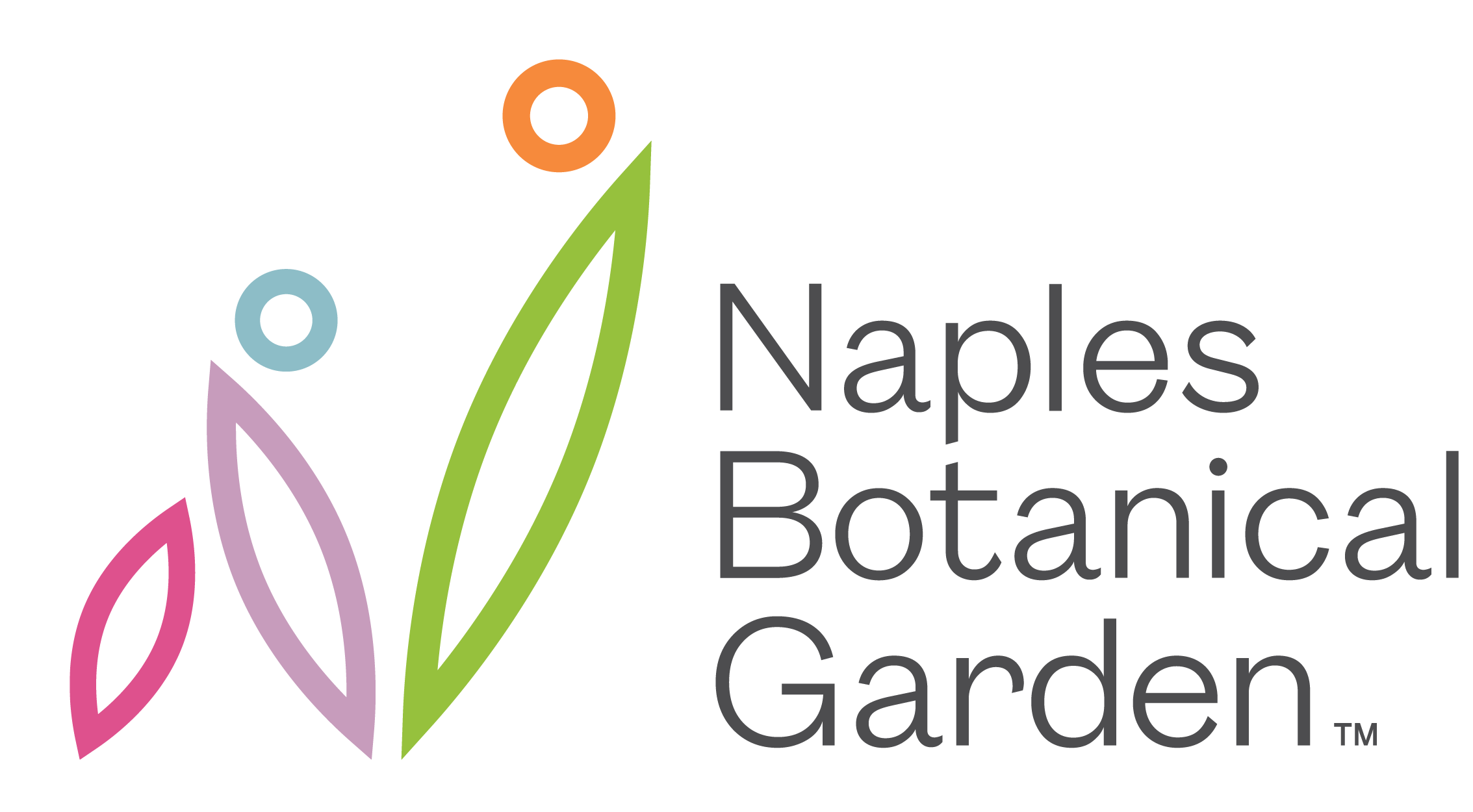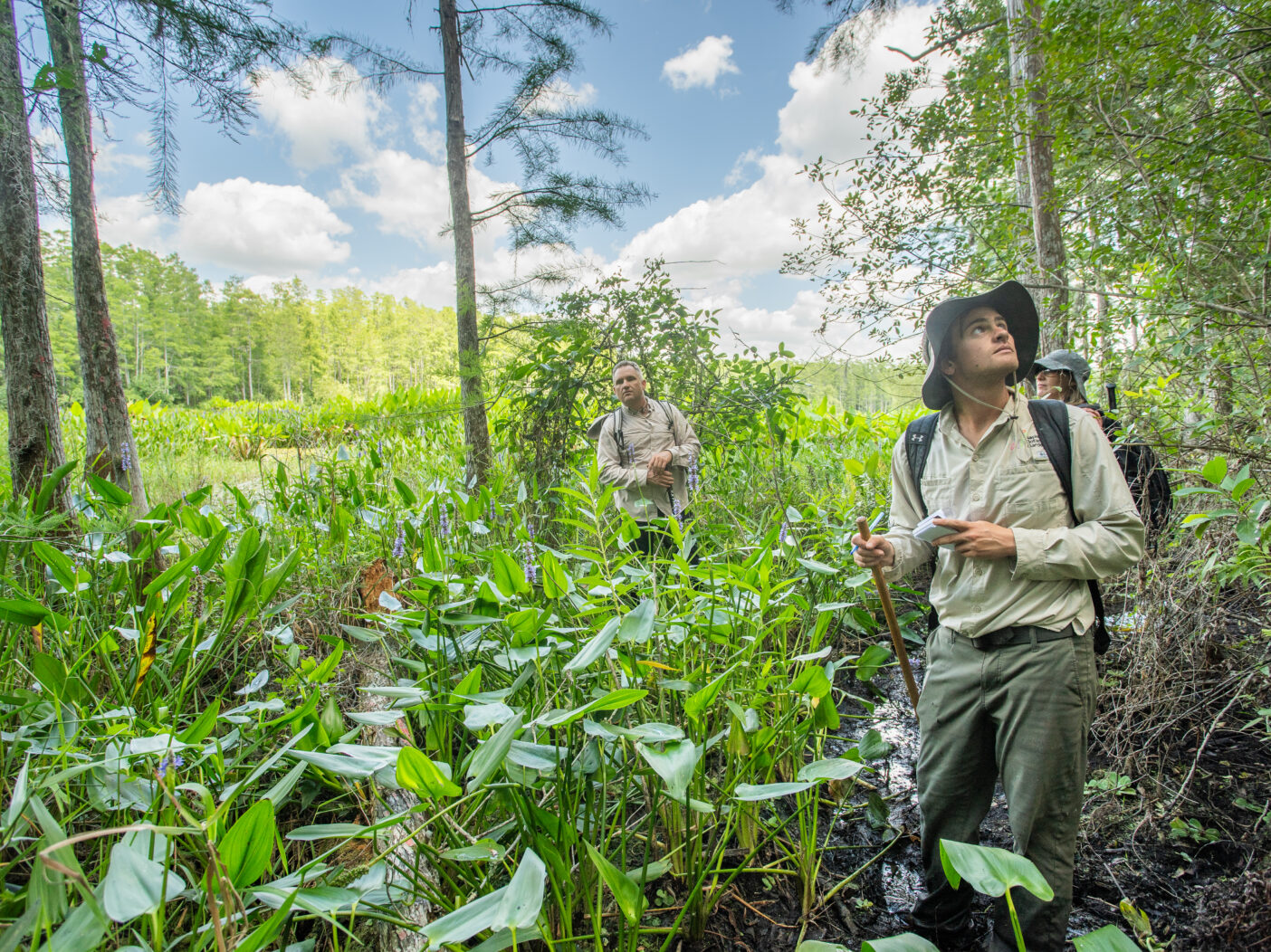
Plant experts hope to learn more about the state’s rare orchids. First, they have to find them.
The boardwalk through Audubon’s Corkscrew Swamp Sanctuary attracts more than 100,000 guests a year, but the backcountry portions of the 13,000-acre property, accessible only to staff and visiting researchers, is rarely traversed and maintains the same mystique that the explorers of yesteryear must have encountered.
On a mild April morning, a dozen hikers set out to investigate one enigma of these woods—the presence of rare orchids and other epiphytes. South Florida’s wildlands harbor some of the state’s most charismatic and imperiled species, including the ghost orchid (Dendrophylax lindenii) and the cigar orchid (Cyrtopodium punctatum). With just over 100 native species, Florida has the richest diversity of native orchids in North America. But much remains unknown about the size, range, and health of their populations. To find these plants, you must comb places like cypress swamps and hardwood hammocks, guided by GPS and a sense of adventure.
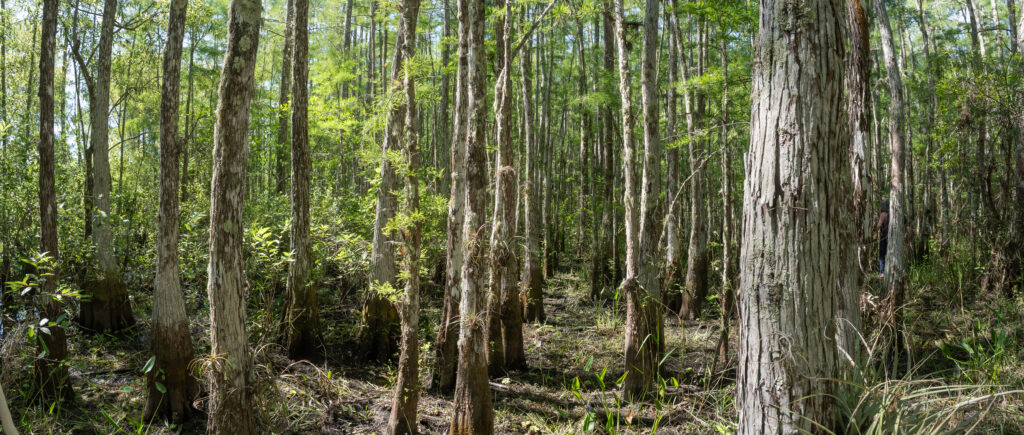
This survey’s participants represent three organizations—the Sanctuary, Naples Botanical Garden, and the Florida Fish and Wildlife Conservation Commission—along with independent experts who’ve joined the excursion out of a love for these plants and desire to protect them. Over the next few hours, they will survey the perimeter of a wetland, tallying every state-listed endangered, threatened, and commercially exploited orchid and epiphyte they see. They’ll also note other relevant finds, such as the presence of wildlife—a sign of ecosystem health—and that of invasive plants, an ever-looming threat.
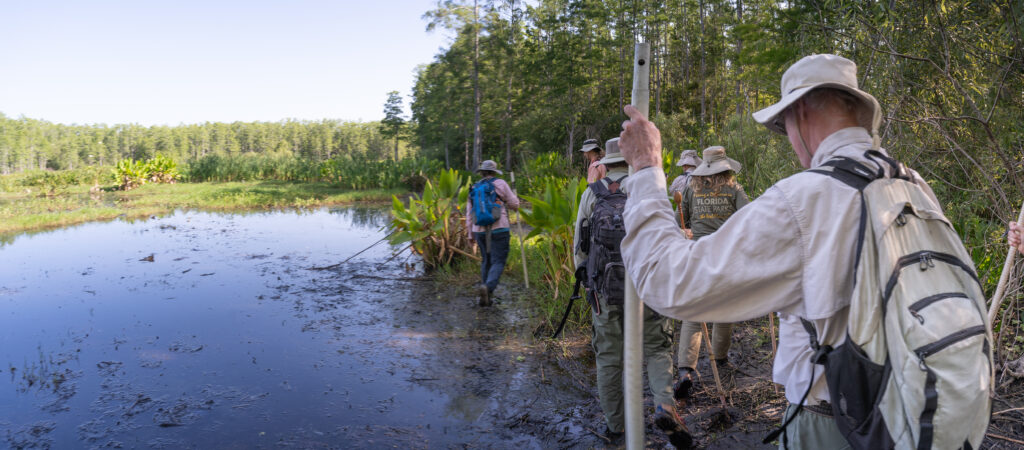
The group steps into the forest’s dappled sunlight, boots squishing in mud. The understory is sparse, allowing them to pick their way through the cypress relatively unencumbered. The unofficial ringleader is Mike Owen, a biologist who recently retired from Fakahatchee Strand Preserve State Park, where he spent 30 years conducting such surveys in the 85,000-acre forest. In late 2023, he began examining some of South Florida’s other vast conservation lands—Big Cypress National Preserve, Corkscrew Swamp Sanctuary, and the Florida Panther National Wildlife Refuge—together with land managers and plant experts such as the ones assembled today.
It does not take long for them to spot their first orchid.
“One Encyclia tampensis?” Owen, the notetaker, confirms with the group’s “scouters,” recording the butterfly orchid in a 3-by-5-inch notebook using a shorthand code. “At 8 feet (high)? On a cypress? Does it have a new (flower) spike? Woah!”
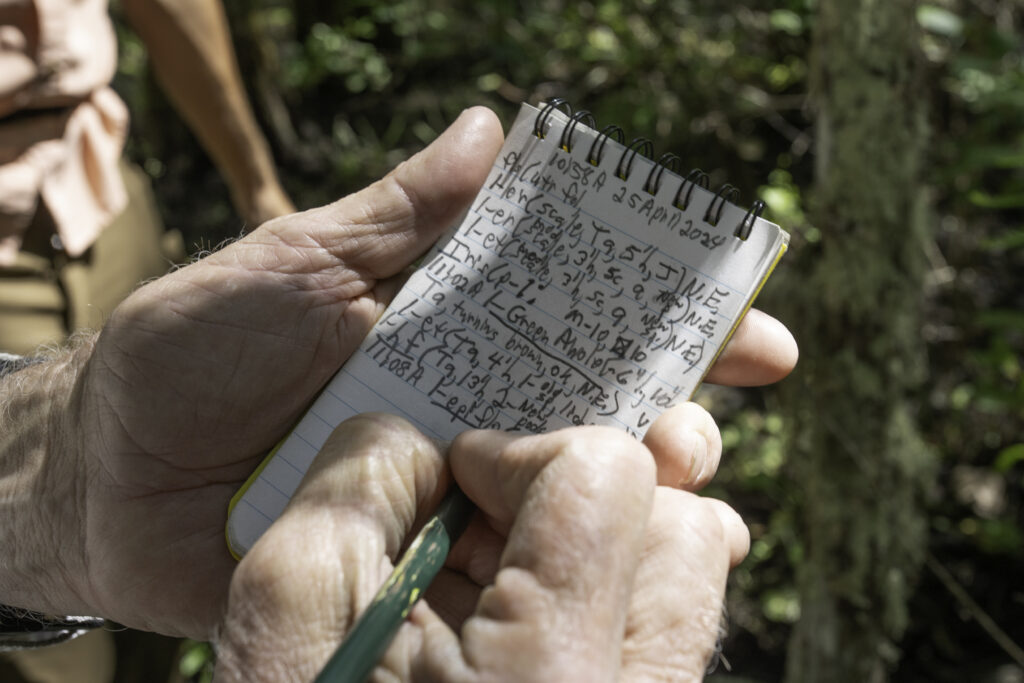
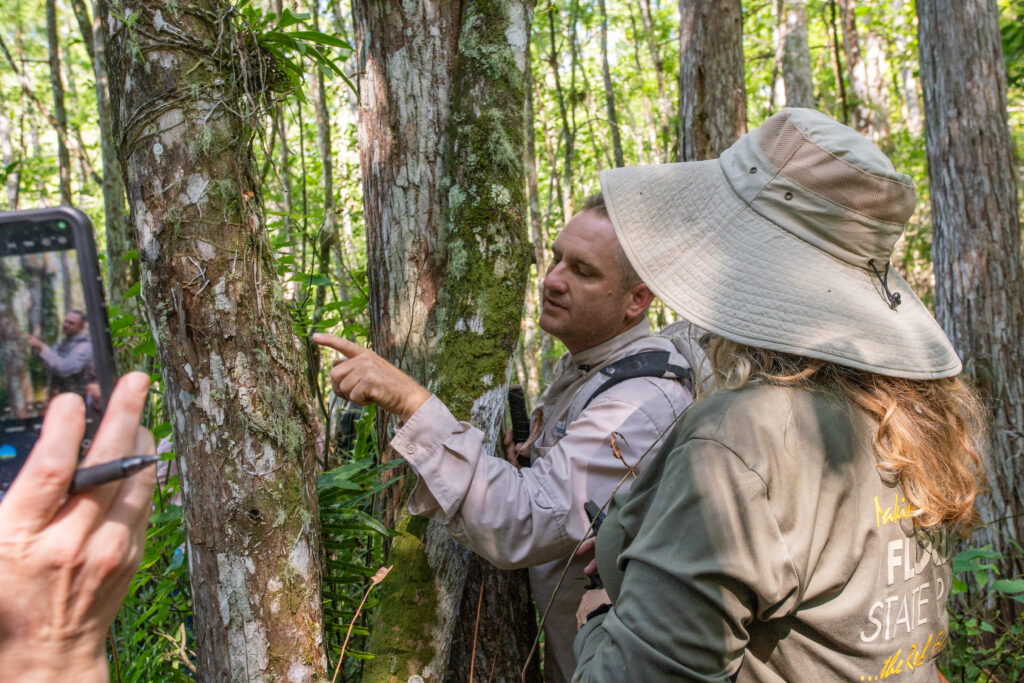
Owen responds to every find with that infectious, kid-on-Christmas-morning excitement. Fieldwork opportunities with Owen and other experts is one reason why the Garden’s Director of Collections, Nick Ewy, a well-regarded epiphyte expert, attends as many surveys as he can. “You learn something every time you come out,” he says. The group dubs Ewy “eagle eye” for his ability to spot a twig-sized orchid from 30 feet away. Ewy likens the exercise to a botanical version of “Where’s Waldo,” requiring experts to scan the green panorama and focus their vision on the places where the orchids are most likely to “hide.”
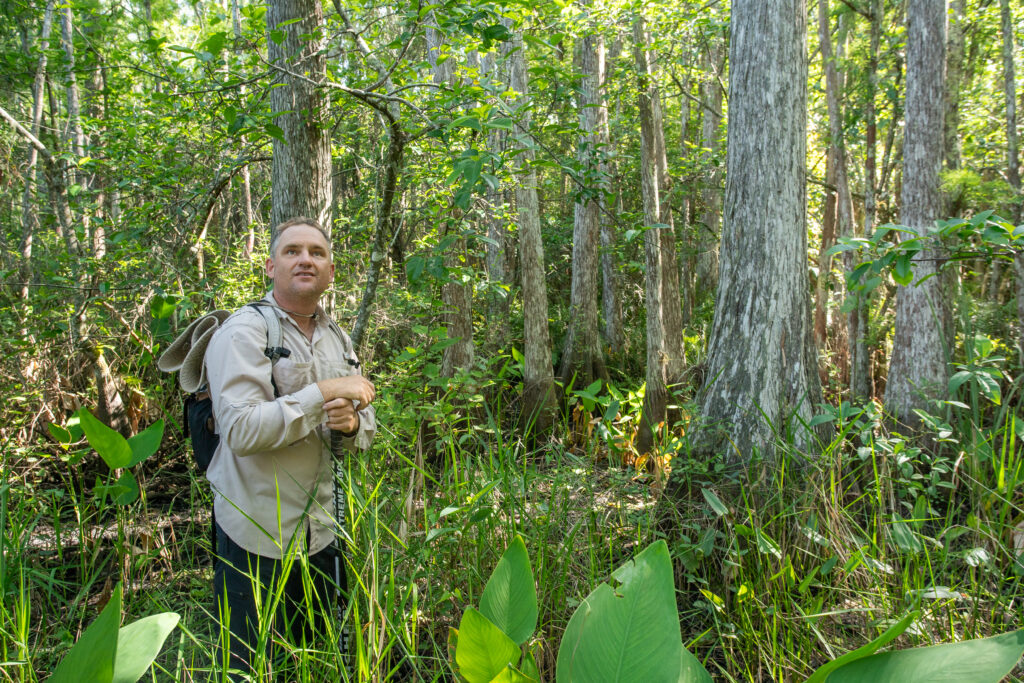
There is not one singular research question these surveys seek to answer, but the information feeds lots of projects. A botanist from Marie Selby Botanical Gardens in Sarasota seeks insights into the endangered Florida star orchid (Epidendrum floridense). A researcher at Florida International University is investigating the presence of scale, tiny insects that affix to plants. Ewy uses the excursions to deepen the Garden’s ties with other conservation organizations and better understand orchids in the wild, knowledge that advances his orchid propagation work and creation of realistic displays on our campus. Alex Meinders, a Research Technician at Corkscrew Swamp Sanctuary, says he hopes to see the information logged in conservation databases to aid researchers.
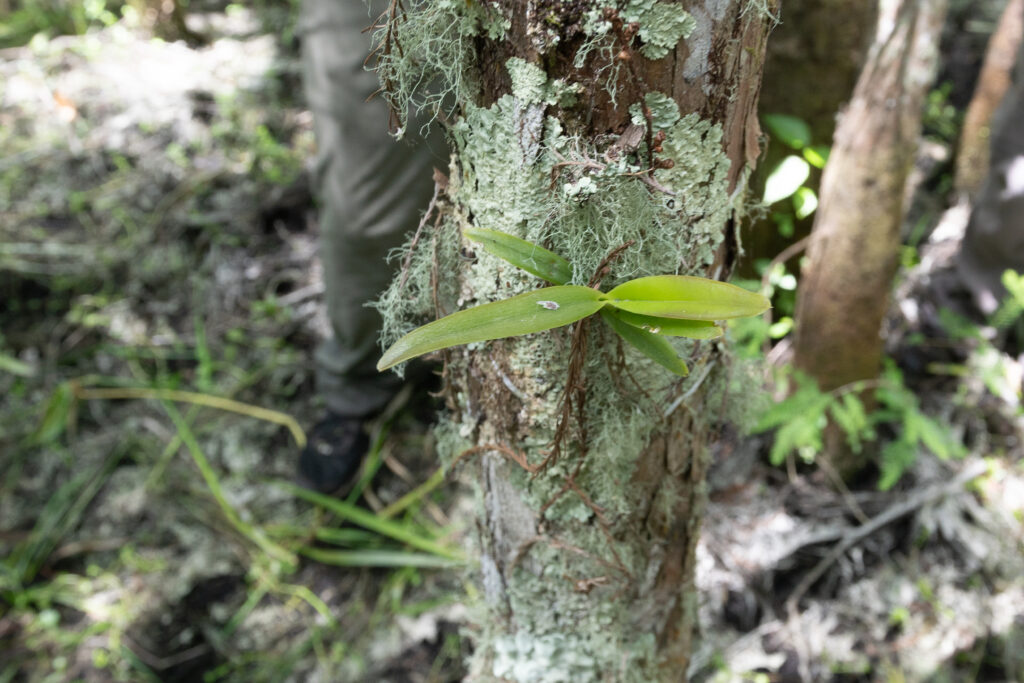
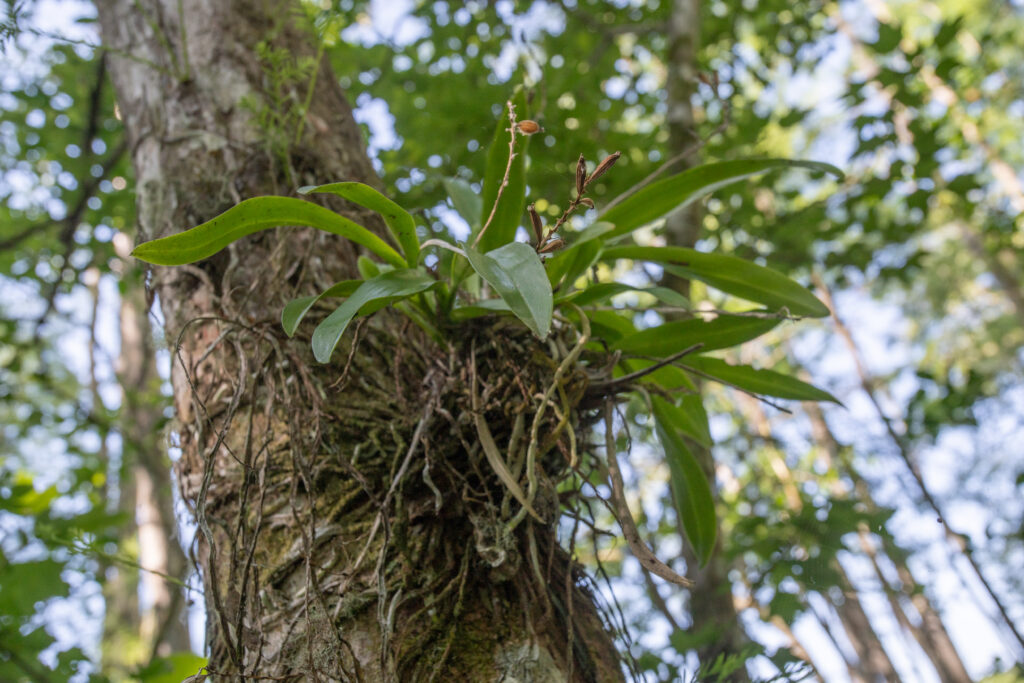
The surveys at the Sanctuary have revealed plants such as Florida star orchid specimens that previously had not been detected. The surveys there also help researchers understand epiphyte growth in an old-growth bald cypress forest, the largest of its kind in North America.
The survey data may contribute to larger regional conservation initiatives, land management decisions, or seed banking efforts. It will also factor into the U.S. Fish and Wildlife Service’s decision on whether to add the ghost orchid—a prime focus of these excursions—to the federal endangered species list.
“We’re creating quantitative baseline data,” Owen explains. The information, he hopes, will help future scientists understand how ecosystems change over time and the impact that stressors such as hurricanes, floods, droughts, and fires may have on the rare epiphytes.
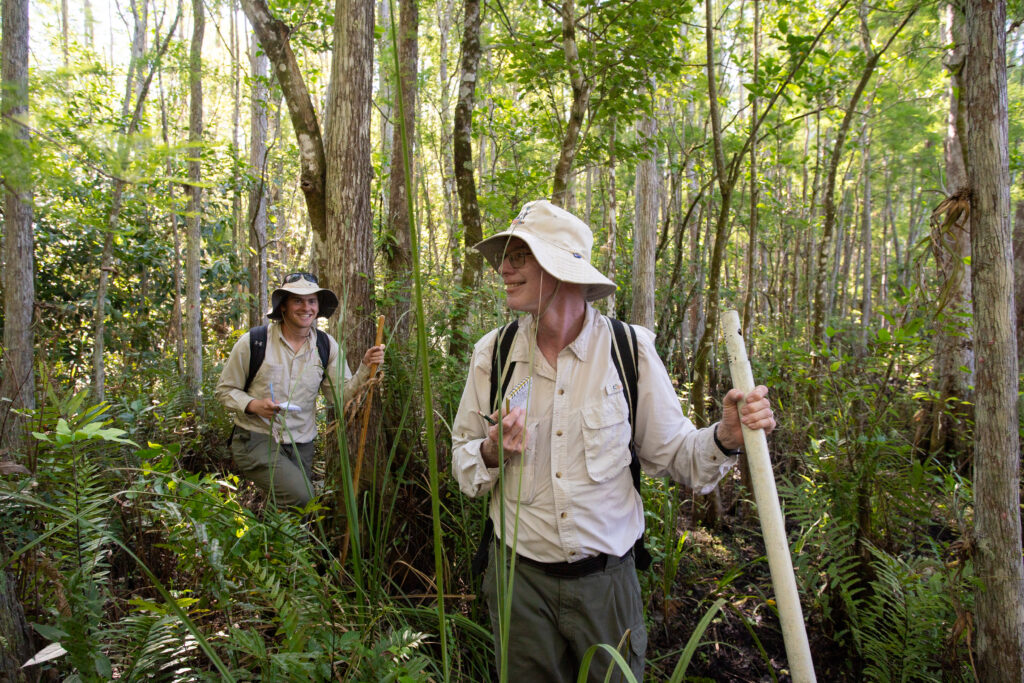
Owen has amassed a trove of data that he’s just beginning to analyze. At Fakahatchee, he filled 90 of those 3-by-5-inch notebooks denoting rare epiphytes and other plants of interest—9,000 pages tallying the rare native species, their size, flower and seed production, host trees, and other characteristics that help scientists understand them and their ecosystems.
From several yards away, someone calls out, “Fuzzy-wuzzy!”
“Touchdown!” Owen exclaims, whipping out the notebook and recording the Tillandsia pruinosa, an air plant. “That’s a state-listed endangered epiphyte with the coolest name.”
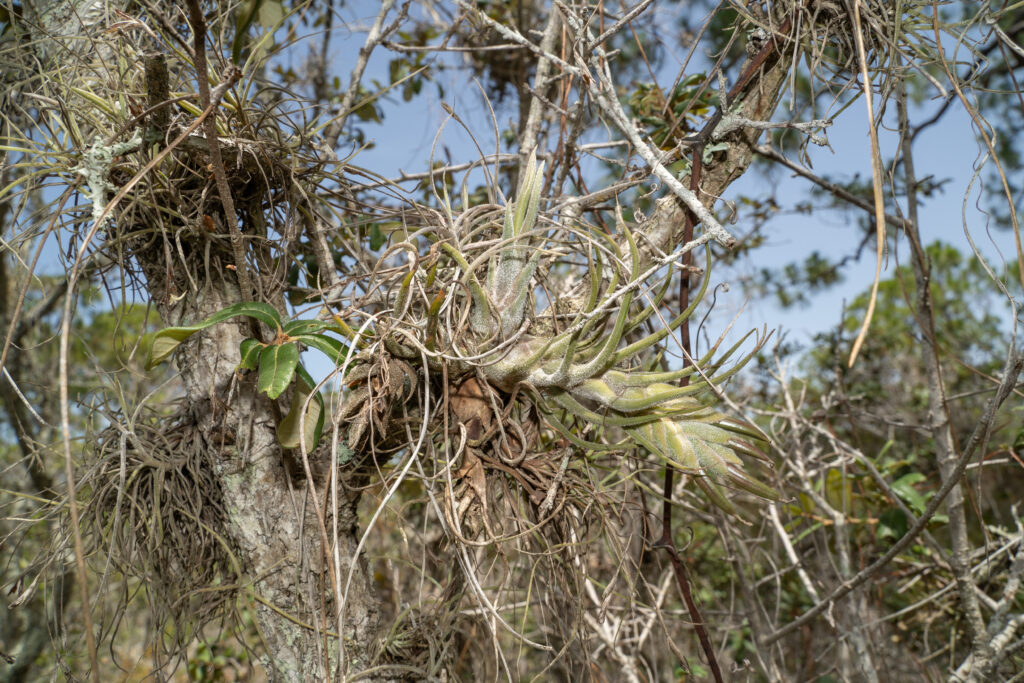
By the survey’s end, the group recorded numerous other species, including the state-endangered yellow helmet orchid (Polystachya concreta), the delicate ionopsis (Ionopsis utricularioides), and a state-threatened needleroot orchid (Dendrophylax porrectus), which is leafless, like its more famous cousin, the ghost orchid.
“It’s special being out in these kinds of places, especially the places that very few people have experienced,” Ewy says. “You just never know what you’re gonna find.”
This article first appeared in the 2024 issue of Conserve, the Garden’s conservation magazine.

